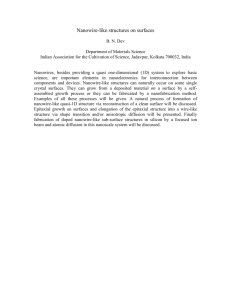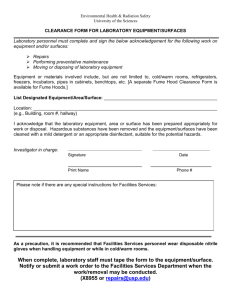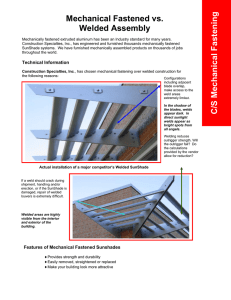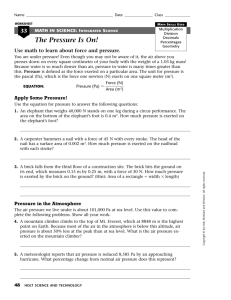Pressure - schoolphysics
advertisement
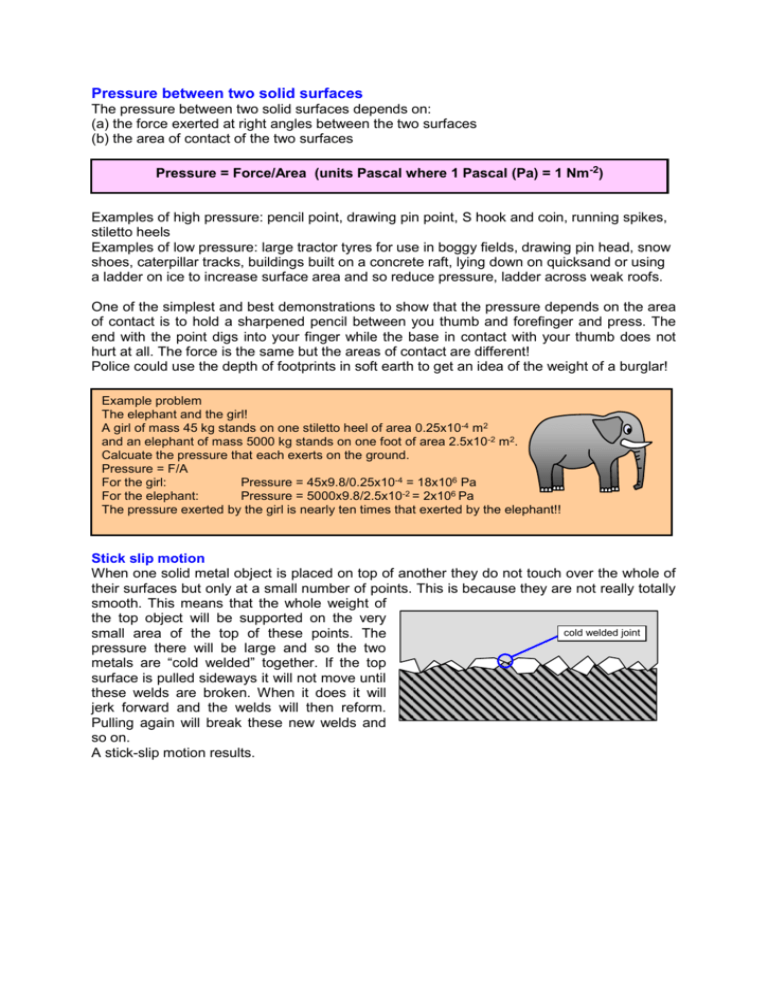
Pressure between two solid surfaces The pressure between two solid surfaces depends on: (a) the force exerted at right angles between the two surfaces (b) the area of contact of the two surfaces Pressure = Force/Area (units Pascal where 1 Pascal (Pa) = 1 Nm-2) Examples of high pressure: pencil point, drawing pin point, S hook and coin, running spikes, stiletto heels Examples of low pressure: large tractor tyres for use in boggy fields, drawing pin head, snow shoes, caterpillar tracks, buildings built on a concrete raft, lying down on quicksand or using a ladder on ice to increase surface area and so reduce pressure, ladder across weak roofs. One of the simplest and best demonstrations to show that the pressure depends on the area of contact is to hold a sharpened pencil between you thumb and forefinger and press. The end with the point digs into your finger while the base in contact with your thumb does not hurt at all. The force is the same but the areas of contact are different! Police could use the depth of footprints in soft earth to get an idea of the weight of a burglar! Example problem The elephant and the girl! A girl of mass 45 kg stands on one stiletto heel of area 0.25x10-4 m2 and an elephant of mass 5000 kg stands on one foot of area 2.5x10-2 m2. Calcuate the pressure that each exerts on the ground. Pressure = F/A For the girl: Pressure = 45x9.8/0.25x10-4 = 18x106 Pa For the elephant: Pressure = 5000x9.8/2.5x10-2 = 2x106 Pa The pressure exerted by the girl is nearly ten times that exerted by the elephant!! Stick slip motion When one solid metal object is placed on top of another they do not touch over the whole of their surfaces but only at a small number of points. This is because they are not really totally smooth. This means that the whole weight of the top object will be supported on the very cold welded joint small area of the top of these points. The pressure there will be large and so the two metals are “cold welded” together. If the top surface is pulled sideways it will not move until these welds are broken. When it does it will jerk forward and the welds will then reform. Pulling again will break these new welds and so on. A stick-slip motion results.
